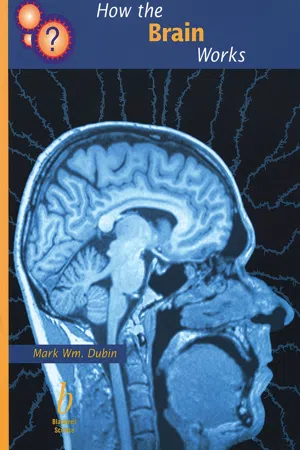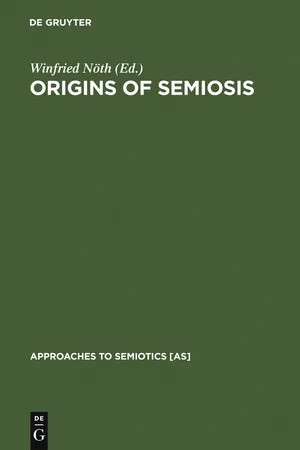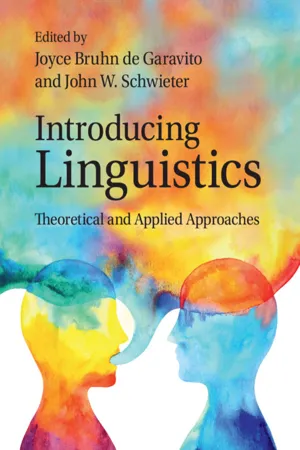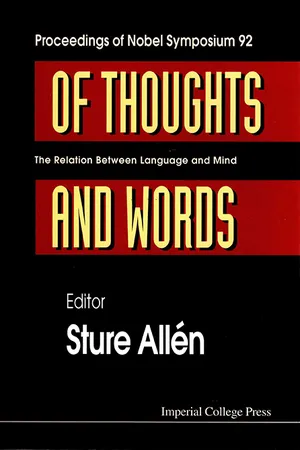Psychology
Language and the Brain
"Language and the Brain" explores the intricate relationship between language processing and the brain. It delves into how the brain comprehends, produces, and acquires language, as well as the neural mechanisms underlying these processes. This field of study encompasses various aspects of cognitive neuroscience, including language development, language disorders, and the impact of brain injuries on language abilities.
Written by Perlego with AI-assistance
Related key terms
1 of 5
11 Key excerpts on "Language and the Brain"
- eBook - PDF
Living Languages
Multilingualism across the Lifespan
- Tracey Tokuhama-Espinosa(Author)
- 2007(Publication Date)
- Praeger(Publisher)
Language is what separates humans from other animals. As the most complex of mental tasks, language is managed by various interconnected parts of the brain (written language uses more parts of the brain simultaneously than perhaps any other mental task). 1 In fact, language skills in the brain are so complicated and overlap so many areas that Peter Indefrey and Marlene Gullenberg summa- rized their attempts to neatly separate them by asking rhetorically if it would not be more effective to ask which areas of the brain were not involved in language, as opposed to which were. Using available studies, we will try to piece together this complex puzzle by first explaining what is known to date about the brain and languages in general, and then we will specifically address multilinguals. WHAT LITTLE WE KNOW Despite overzealous claims in the popular press, knowledge about the human brain is in its infantile stages. Very little is known about this organ, and of what is presumed, most still remains to be con- firmed. Despite these limitations, however, one of the richest areas of brain research relates to human language development, which yields a wealth of fascinating, though incomplete, facts. Neuro- science, psychology, and linguistics have posited explanations for an overall language system involving a myriad of brain areas that per- form independent functions in a symphony coordinated by a multi- faceted conductor, the mind. Today it is now possible to view a functioning healthy brain in vivo as it processes different language- related activities. These studies help us determine which language problems appear to be congenital (from birth) versus which seem to be developmental, and we can distinguish those that demand the use of one area of the brain more than others. The most documented aspect of Language and the Brain is first- language acquisition. - eBook - PDF
- Mark Wm. Dubin(Author)
- 2013(Publication Date)
- Wiley-Blackwell(Publisher)
The ability for human communication to be as flexible and nuanced as it is depends on complex brain circuitry that no computer-based translation algori thm has come close to matching, which is why machine translations can be both crude and silly. We can barely 48 HOW THE BRAIN WORKS explain how such complexity is organized in the br ain. In large part this failure is because there is not a single, self-evident theory of language and its structure th at we can map onto the stru cture of the brain. What we have are tantalizing hints from defects in lan guage abil-ity caused by strokes, brain lesions, and prenatal mis-development and from recent neuroimaging s tudi es that try to capture and localize language in th e br ain as it happens. This lecture introduces th ese hints and indi-cates the questions that need to be answered. It makes the point that once we get past regions of th e br ain responsible for direct input and output, the way we organize our understanding of brain structure is highly d ependent on how we intellectually a nd culturally organize the structure of the world and our behaviors in it. WHAT IS LANGUAGE? Language is a collection of symbols that encode meaning. The word meaning implies cognition, that is, inner mental events that have intention and content beyond the action potentials that underlie their exis-tence. Invoking such inner events is very different from conceptualizing the brain as a mindless behavioral device th at processes inpu ts into outputs in a machine-like manner . In Lecture 9, we will ha ve much more to say abo ut this way of approaching the brain, but for now its importance is th at we cannot try to understand h ow the brain makes language wi th o ut understanding th e intellectual nature of th e linguistic process itself. For example, we need to know if language is a symbol-ic code th at is entirely arbitr ary or if it has underlying universals that occur in all language systems. - eBook - PDF
Origins of Semiosis
Sign Evolution in Nature and Culture
- Winfried Nöth(Author)
- 2011(Publication Date)
- De Gruyter Mouton(Publisher)
Language and brain Helmut Schnelle 1. Revisions in the foundation of linguistics 1.1. Traditionally and conventionally, languages are conceived of as external to human beings. They are sets of sound patterns related to meanings, and they are used as tools of communication. The fact that human beings are able to produce and to receive these sound patterns with meanings does not make them internal. There have been several attempts to correct this commonsense notion, by Herder, Humboldt, the Neo-Humboldtians, the Neo-Grammarians, Wundt, Jespersen, Bühler, Jakobson, to mention just a few. For all of them, language was part of the internal constitution of a human individ-ual or of a group of humans. However, with the exception of Jakobson, none of these linguists addressed the problem of the relation of language and brain. For Jakobson, it was a matter of special interest but not a fundamental question. It was only recently that the problem was emphasized by Chomsky as part of a larger program of the reevaluation of linguistics (cf. also Schnelle 1991). For Chomsky (1986a: 10), linguistics becomes part of psychology, ultimately biology. It will be incorporated within the natural sciences insofar as mechanisms are discovered which are revealed in these more abstract studies; indeed, one would expect that these studies will be a necessary step toward serious investigation of mechanisms (cf. also various passages in Chomsky 1986b and 1988). This integration of linguistics and psychology into the framework of the natural sciences is mediated by referring to the brain: Regard talk of mind as talk of the brain undertaken at a certain level of abstraction at which we believe, rightly or wrongly, that significant properties and explanatory principles can be discovered (Chomsky 1986a: 7). Thus, linguistics is the psychology of certain human abilities realized in the mind/brain, namely the ability to use language in a regular way and the ability to acquire the ability of its use. - eBook - PDF
Introducing Linguistics
Theoretical and Applied Approaches
- Joyce Bruhn de Garavito, John W. Schwieter(Authors)
- 2021(Publication Date)
- Cambridge University Press(Publisher)
15.1 What Is Neurolinguistics? The area of linguistics which studies the biological and cognitive bases of language is neurolinguistics. In other words, neurolinguistics studies Language and the Brain. This branch of linguistics and neuroscience allows us to learn more about the physi- ological mechanisms which the brain uses for language. Neurolinguists investigate research questions such as: • How is language represented in the brain? • Is there a place in the brain where language is primarily located? • What are the effects on language of trauma to, or degeneration of, certain areas of the brain? What are the recovery patterns for lost language abilities? • What makes the human brain specialized and advanced enough for language that other species’ brains lack? • Does language use the same parts of the brain for other non-linguistic tasks such as playing a musical instrument or doing mathematics? • How is the bilingual brain different from the monolingual brain? 15 Neurolinguistics Language and the Brain John W. Schwieter 536 Neurolinguistics In addition to being highly related to psycholinguistics, neurolinguistics also informs the main branches of linguistics by exploring phenomena such as how the brain: • separates the speech we hear from background noise (phonetics); • represents the sound system (phonology); • stores and accesses morphemes (morphology); • combines words into phrases (syntax); and • uses structural and contextual information to comprehend language (semantics). PAUSE AND REFLECT 15.1 Have you ever heard that one side of the brain is more responsible for language? If so, which side is it? Later in the chapter, we will see whether or not this is true. 15.2 The Human Brain and Language Is language what makes us human? Although being human may have other special- ized traits, our ability for language does set us apart from other species. These superior language abilities exist because of our highly developed brain. - eBook - PDF
- Edna Andrews(Author)
- 2014(Publication Date)
- Cambridge University Press(Publisher)
2 Building the basis: linguistic contributions to a theory of language and their relevance to the study of language and brain Linguistics has a double object: it is the science of language and the science of languages. (E ´ mile Benveniste) One of the ongoing issues in research devoted to language and brain is the need for a more significant incorporation of linguistic theory. Poeppel (2004, 2005, 2008) has been one of the more eloquent researchers to discuss this problem. In this chapter I take up this issue and present a set of important contributions from theoretical linguistics, cognitive linguistics, cognitive anthropology, semiotics, sociolinguistic theory, and second language acquisition theory that are central to a robust research agenda in the field of language and brain. In particular, I will analyze the essential principles of human language that are critical to the development and implementation of ecologically valid research paradigms in the study of brain and language, since many of the central notions of the discipline of linguistics have not been fully articulated and explored in neurolinguistic and imaging studies of language. 1 2.1 The foundation of a theory of language and brain: understanding speech acts In order to build a theoretical foundation for understanding human language, there are fundamental properties inherent in all human languages that must be explicated from the very beginning. One way to introduce these concepts is via an attempt at a working definition of language. I propose the following definition of language and languages as a starting point for this analysis: A learned, dynamic, hierarchical, relatively autonomous system of meaning- generating paradigmatic and syntagmatic signs that signify and communicate to self and others via speech communities and communities of practice throughout the life cycle. Several important ideas are articulated in the above definition. - eBook - PDF
For the Love of Language
An Introduction to Linguistics
- Kate Burridge, Tonya N. Stebbins(Authors)
- 2019(Publication Date)
- Cambridge University Press(Publisher)
Furthermore, the structure of the brain and its relation to language is only now becoming clearer to researchers, as new technologies and methods make it possible to develop more and more detailed records of the brain activity associated with language. In this chapter, we will review what is known about how language maps onto different areas of the brain, explore a range of techniques for learning more about how the brain works, and discuss different approaches to understanding how language is used. Here we will draw a preliminary distinction between research that is concerned with representations of language in the mind (how we organise what we know about language) and the study of processes associated with language use in the brain (how we produce and understand lan- guage). We close by exploring some of the diversity associated with language and its relation to the brain. LANGUAGE, THE MIND AND THE BRAIN 16 Podcast 515 CHAPTER 16: Language, the mind and the brain 16.1 LANGUAGE, CULTURE AND THE MIND The limits of my language mean the limits of my world. Ludwig Wittgenstein (1921), Tractatus Logico-Philosophicus (trans.) One of the really fascinating things about languages is the fact that different languages por- tray the world in different terms. Even things as fundamental as body parts are represented quite differently in different languages. For example, the arm, hand and fingers are all referred to with the single word angēthik in Mali, while in Gurindji the lower arm, hand and fingers are known as wartan, in contrast to the upper arm, which is called murlku. Kinship terms are a widely recognised area of cultural difference reflected in different lan- guages. Consider the following sets of kinship terms, in Tables 16.1, 16.2, 16.3 and 16.4, from our case-study languages and notice how relations are organised differently in each case. - eBook - PDF
- Erika Hoff(Author)
- 2020(Publication Date)
- Cengage Learning EMEA(Publisher)
This question is really the neuroanatomical version of the question of whether lan-guage is a separate, isolated ability or just one manifestation of humans ’ general cognitive capacity. Another question that studies of the brain might answer is whether language itself is one thing or many things. That is, are syntax, semantics, and pragmatics different competencies in the brain or only in the theories of the linguists who study language? Questions of what are separate competencies are addressed in neurolinguistics in part FIG-2-2 The Human Brain Viewed From Above The physical appearance of the human brain does not reveal what the brain does or how it does it. The field of neurolin-guistics is devoted to the study of what structures in the brain are involved in language processing and language acquisition and how those structures serve their linguistic functions. © Bettmann/Corbis 36 Chapter 2 Copyright 2013 Cengage Learning. All Rights Reserved. May not be copied, scanned, or duplicated, in whole or in part. Due to electronic rights, some third party content may be suppressed from the eBook and/or eChapter(s). Editorial review has deemed that any suppressed content does not materially affect the overall learning experience. Cengage Learning reserves the right to remove additional content at any time if subsequent rights restrictions require it. by examining whether these functions are carried out by different parts of the brain. To understand the research in this area, we need to begin with basic neuroanatomy. Some Basic Neuroanatomy The appearance of the brain as an undifferentiated mass is misleading. The brain actually has different parts that perform different functions. When you look at an intact brain, what you see is the outer layer — the cerebral cortex . Hidden underneath the large cortex are the subcortical parts of the brain. - eBook - PDF
- Ralph W. Fasold, Jeff Connor-Linton(Authors)
- 2014(Publication Date)
- Cambridge University Press(Publisher)
7 Language and the Brain KEY TERMS • agrammatism • aphasia • behavioral genetics • biocognitive/neurocognitive • biotemporal dynamics/ spatiotemporal dynamics • Broca ’ s area • Broca ’ s region • Brodmann ’ s area (BA) • converging evidence • cortex • direct brain recording and stimulation • domain general • domain speci fi c • Event-Related Potentials (ERPs) • functional biology/functional neuroanatomy • functional Magnetic Resonance Imaging (fMRI) • hormone • lesion method • localize • magnetoencephalography (MEG) • neurodegenerative disease • neuroimaging • neurotransmitter • Positron Emission Tomography (PET) • psycholinguistics • separability • spatial resolution • Speci fi c Language Impairment (SLI) • subcortical structure • temporal resolution • Transcranial Magnetic Stimulation (TMS) CHAPTER PREVIEW Language is rooted in the biology of the brain. Therefore understanding the biology of language is critical to understanding language itself. The vast majority of research on the biological bases of language has focused on brain anatomy, mainly attempting to identify which parts of the brain underlie which language functions, such as lexical or grammatical abilities. However, the biology of language can also be investigated at many other levels, from cells to molecules to genes. Moreover, the study of all these aspects of biology must be complemented by and integrated with psycholinguistic studies of how language is actually used as we speak and understand; with investigations of language acquisition; and with the theoretical linguistic examination of the architecture of language. Taken together, these provide an insight into the ultimate goal of understanding the biocognitive or neurocognitive bases of language. - Victoria Fromkin, Robert Rodman, Nina Hyams, , Victoria Fromkin, Robert Rodman, Nina Hyams(Authors)
- 2018(Publication Date)
- Cengage Learning EMEA(Publisher)
430 10 The Human Mind at Work Psycholinguistics is an area of experimental linguistics that is concerned with linguistic performance—how we use our linguistic competence—in speech (or sign) production and comprehension. The human brain not only acquires and stores the mental lexicon and grammar, but also accesses that linguistic store- house to speak and understand language in real time. When we speak, we access our lexicon to find the words, and we use the rules of grammar to construct novel sentences and to produce the sounds that express them. When we listen to speech we also access the lexicon and grammar to assign a structure and meaning to the sequence of words we hear. We also connect the sentences we hear into a mental model of the discourse relying on both our linguistic and real-world knowledge. The grammar relates sounds and meanings, and contains the units and rules of the language that make speech production and comprehension possible. How- ever, other psychological processes are also involved in the production and com- prehension of language. Various mechanisms enable us to break the continuous stream of speech sounds into linguistic units such as phonemes, syllables, and words in order to comprehend a message and to compose sounds into words in Language Processing and the Human Brain No doubt a reasonable model of language use will incorporate, as a basic component, the generative grammar that expresses the speaker-hearer’s knowledge of the language; but this generative grammar does not, in itself, prescribe the character or functioning of a perceptual model or a model of speech production. NOAM CHOMSKY, Aspects of the Theory of Syntax, 1965 Copyright 2019 Cengage Learning. All Rights Reserved. May not be copied, scanned, or duplicated, in whole or in part. Due to electronic rights, some third party content may be suppressed from the eBook and/or eChapter(s).- eBook - PDF
- Patricia J. Brooks, Vera Kempe(Authors)
- 2014(Publication Date)
- BPS Blackwell(Publisher)
We will also explore how the brain adapts to linguistic skills that are not ubiquitous and are acquired later in life, such as reading. Furthermore, we will consider to what extent functional plasticity of the brain diminishes over the lifespan, and ask whether there is a critical period for language development. 12.1 WHICH AREAS OF THE BRAIN PROCESS LANGUAGE? In exploring how the developing brain processes language, we will start by providing a very general summary of how language is processed in the adult brain. However, before we begin locating functional neural networks or modules, it is necessary for us to introduce some of the terms used to label different brain regions. The neocortex is broadly divided into four areas called lobes (i.e. frontal lobe, temporal lobe, parietal lobe, and occipital lobe; see Figure 12.1). Within the neocortex, it is possible to identify specific anatomical structures, such as a groove (called a sulcus or fissure, depending on how deep it is) 12.1 WHICH AREAS OF THE BRAIN PROCESS LANGUAGE? 264 12.1.1 Processing speech sounds in the brain 265 12.1.2 Processing grammar in the brain 266 12.1.3 Processing meaning in the brain 267 12.1.4 Connecting the different circuits 267 12.2 WHEN DOES NEURAL SPECIALISATION FOR LANGUAGE DEVELOP? 271 12.2.1 Early specialisation of cortical areas for speech processing 271 12.2.2 Genetic underpinnings of neural specialisation 273 12.2.3 Adapting the brain to literacy 275 12.3 IS THERE A CRITICAL PERIOD FOR LAN- GUAGE DEVELOPMENT? 277 12.3.1 Age of recovery from brain injury 278 12.3.2 Age of exposure to a second language 279 12.3.3 Neural representation of a second language 281 C H A P T E R O U T L I N E parietal lobe a region of the human brain located behind the frontal lobe of each cerebral hemisphere. occipital lobe a region of the human brain located at the rear of each cerebral hemisphere. HOW DOES LANGUAGE DEVELOPMENT AFFECT THE BRAIN? 265 or a bump (called a gyrus). - eBook - PDF
Of Thoughts And Words: The Relation Between Language And Mind - Proceedings Of Nobel Symposium 92
The Relation Between Language and Mind
- Sture Allen(Author)
- 1995(Publication Date)
- ICP(Publisher)
189 The mechanisms considered so far are located in the cerebral cortex. Other mechanisms in deeper parts of the brain, in the limbic system, the thalamus, etc., may also pertain to the emotional machinery which determines the tone and intentional aspects of our language. Here, however, we approach the topic of language and the subconscious which is a field at present largely unexplored. 9. The Speed of Cerebral Language Functions Schematically seen, classical language theories have a bottom-up character. Auditory and visual messages are supposedly analyzed in a stepwise fashion by multisynaptic sensory systems localized in post-rolandic parts of the cortex. Here word gestalts are recognized and included in input lexica, which apparently are of two different types (Raichle et al. 1994). The messages are then further processed to the pre-rolandic output side of the cortex where words are combined into meaningful sentences with appropriate grammar and syntax in a man-ner which is still unclear. A sequence of this type includes a large number of synapses, and, hence, must take considerable time. The bottom-up type of language processing requires much too long time to explain the normal ultra-rapid speed of understanding language and producing adequate spoken responses. It appears that so far the speed of cerebral language processing has not been stressed adequately in current neurophysiolo-gical language theories. Unfortunately, even the most sophisticated brain imaging PET techniques do not have anywhere near sufficient temporal resolution to elucidate the speed of cerebral language mechanisms. Take an ordinary conversation between two normally conscious per-sons, John and Mary. When John addresses Mary, she usually grasps within part of a second the topic talked about, and she understands what John says more or less immediately.
Index pages curate the most relevant extracts from our library of academic textbooks. They’ve been created using an in-house natural language model (NLM), each adding context and meaning to key research topics.










